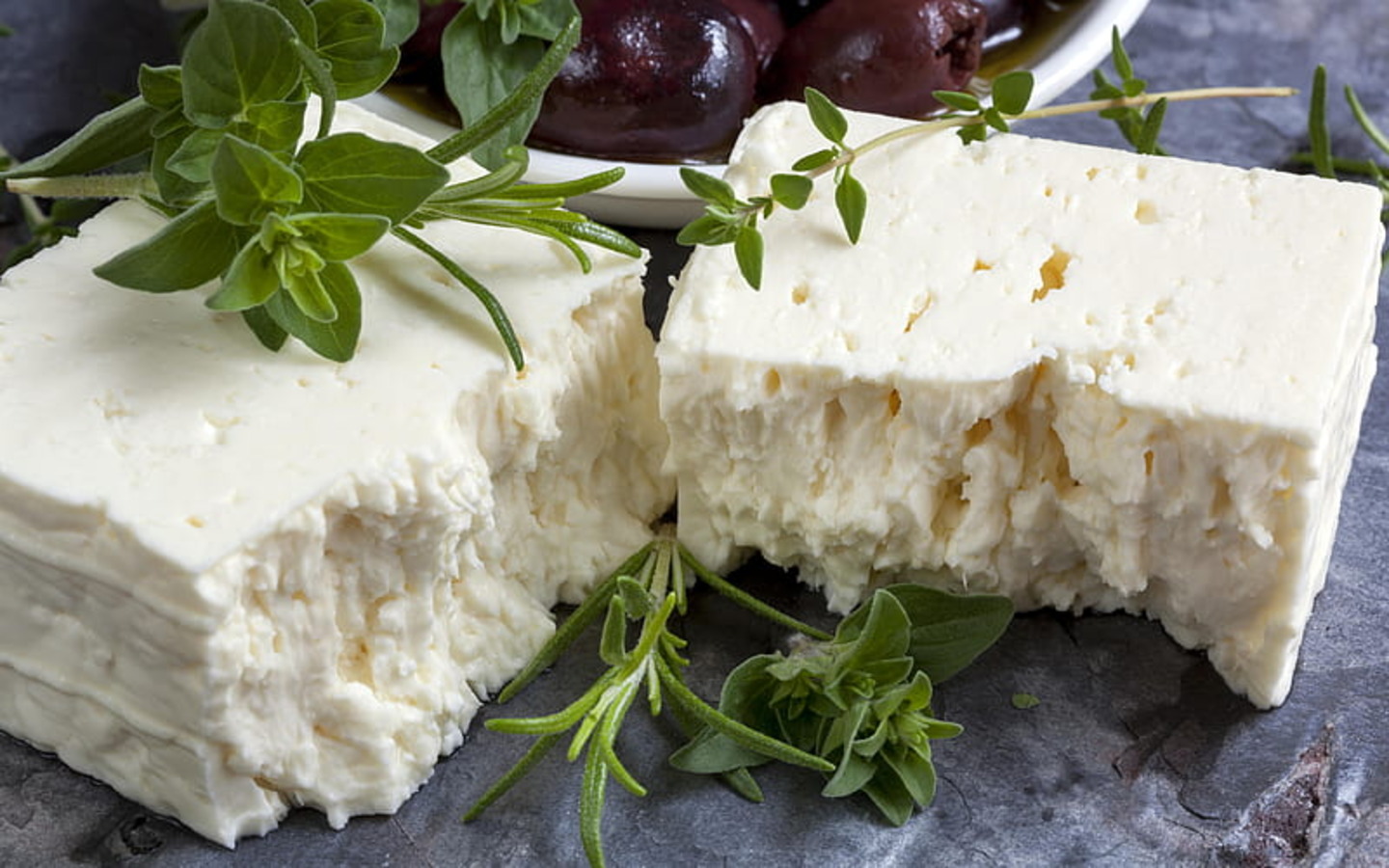
When it comes to cheese, there are countless varieties to choose from, each with its own unique flavor and qualities. One such cheese that often stands out in the crowd is feta. Feta is a traditional Greek cheese that has gained popularity around the world for its tangy taste and crumbly texture. Whether you’re a cheese connoisseur or simply a fan of Greek cuisine, there’s no denying the appeal of this delicious dairy delight.
In this article, we’ll explore 18 interesting facts about feta that will give you a deeper appreciation for this beloved cheese. From its ancient origins to its nutritional benefits, you’ll learn why feta is a staple in many Mediterranean dishes and why it continues to captivate taste buds worldwide. So, grab a slice of crusty bread, a drizzle of olive oil, and join us on this journey through the fascinating world of feta cheese.
Key Takeaways:
- Feta is a traditional Greek cheese that’s crumbly, creamy, and versatile in cooking. It’s rich in calcium, probiotics, and protein, making it a delicious and nutritious addition to any meal.
- Whether crumbled over salads, paired with fruits, or used in sweet and savory dishes, Feta’s unique flavor and texture make it a beloved cheese enjoyed worldwide in various cuisines.
Feta is a traditional cheese from Greece
Feta is a beloved cheese that originated in Greece and has been a staple in Mediterranean cuisine for centuries. It is made from sheep’s milk or a combination of sheep’s and goat’s milk.
Feta is protected by EU regulations
In 2002, Feta was granted Protected Designation of Origin (PDO) status by the European Union, which means only cheeses made in specific regions of Greece can be labeled as Feta.
Feta is crumbly and creamy
Feta has a unique texture that is both crumbly and creamy. It has a tangy and salty flavor that pairs well with a variety of dishes.
Feta is aged in brine
After being formed into blocks, Feta is aged in brine for several weeks. This brining process gives the cheese its distinct salty taste and helps preserve it.
Feta is versatile in cooking
Feta can be enjoyed on its own, crumbled over salads, added to sandwiches, or used in a wide range of Mediterranean recipes. It adds a creamy and tangy element to any dish.
Feta is a great source of calcium
One of the benefits of enjoying Feta is its high calcium content. Calcium is essential for maintaining strong bones and teeth.
Feta is a probiotic-rich cheese
As a fermented cheese, Feta contains beneficial bacteria that can promote a healthy gut. Probiotics are known for their digestive health benefits.
Feta is low in lactose
If you are lactose intolerant, you may still be able to enjoy Feta. It is naturally lower in lactose compared to other cheeses.
Feta can be made with goat’s milk
While traditional Feta is made with sheep’s milk, variations of the cheese can also be made with goat’s milk or a combination of goat’s and sheep’s milk.
Feta is a popular ingredient in Greek salads
Greek salads are famous for their inclusion of Feta cheese. Its salty and tangy flavor complements the fresh vegetables and olive oil dressing perfectly.
Feta should be stored in brine
To keep Feta fresh and flavorful, it is best to store it in its brine. This helps to maintain its texture and prevents it from drying out.
Feta is rich in protein
Feta is not only delicious but also a good source of protein, which is essential for building and repairing tissues in the body.
Feta can be made using traditional cheese-making techniques
The production of Feta still relies on traditional cheese-making methods that have been passed down through generations, ensuring its authentic taste and quality.
Feta pairs well with fruits
The combination of Feta cheese with fruits like watermelon, figs, or grapes creates a delightful balance of flavors, making it a popular choice for cheese platters.
Feta is a key ingredient in Spanakopita
Spanakopita, a traditional Greek dish, features layers of flaky phyllo pastry filled with spinach, herbs, and creamy Feta cheese.
Feta can be used in both sweet and savory dishes
While Feta is commonly associated with savory dishes, it can also be used in sweet recipes like pastries or paired with honey for a unique flavor combination.
Feta can be crumbled or sliced
Depending on the recipe or personal preference, Feta can be crumbled over dishes for a more rustic appearance or sliced for a neater presentation.
Feta is enjoyed worldwide
Feta has gained popularity globally and can now be found in various cuisines and international recipes. Its unique flavor and versatility make it a favorite among food lovers everywhere.
Conclusion
Feta cheese is undoubtedly a staple in Mediterranean cuisine and has gained popularity worldwide. Its rich and tangy flavor, crumbly texture, and versatility in various dishes make it a favorite among food lovers. In this article, we’ve explored 18 fascinating facts about feta, from its origins in Greece to its production process and culinary uses. Whether you enjoy it in a Greek salad, stuffed in pastries, or melted on top of a burger, feta cheese is sure to add a delightful burst of flavor to any dish.
FAQs
1. What is feta cheese?
Feta cheese is a type of white, crumbly cheese that originates from Greece. It is traditionally made from sheep’s milk or a combination of sheep’s and goat’s milk, giving it a unique tangy flavor.
2. Is feta cheese only made in Greece?
While feta cheese originated in Greece and is often associated with Greek cuisine, it can also be produced in other countries. However, authentic feta cheese should be made using traditional Greek methods and ingredients.
3. Can feta cheese be used in cooking?
Absolutely! Feta cheese is incredibly versatile and can be used in a variety of cooked dishes. It adds a creamy and tangy flavor to salads, pasta, pizzas, and even baked goods.
4. Is feta cheese suitable for vegetarians?
Feta cheese is traditionally made using animal rennet, which is not suitable for vegetarians. However, there are some vegetarian-friendly versions available that use microbial or vegetable-based rennet.
5. How should feta cheese be stored?
Feta cheese should be stored in the refrigerator, preferably in its original brine or wrapped tightly in plastic wrap to prevent it from drying out. It is best consumed within a few weeks of opening.
6. Can lactose-intolerant individuals consume feta cheese?
Feta cheese, like most aged cheeses, contains minimal lactose. Many lactose-intolerant individuals can tolerate small amounts of feta cheese without experiencing discomfort. However, it’s best to consult with a healthcare professional to determine individual tolerance levels.
7. Can feta cheese be frozen?
Freezing feta cheese may alter its texture and cause it to become crumbly. It is recommended to consume feta cheese fresh for the best taste and texture.
8. Is feta cheese high in fat?
Feta cheese is relatively high in fat compared to some other types of cheese. However, it is also a good source of essential nutrients like calcium and protein. As with any food, moderation is key.
9. What are some popular dishes that include feta cheese?
Feta cheese can be found in many traditional Greek dishes such as Greek salad, spanakopita (spinach pie), and tiropita (cheese pie). It is also delicious when crumbled over roasted vegetables, added to omelets, or paired with fruits like watermelon.
10. Can feta cheese be substituted with other types of cheese?
While the unique flavor and texture of feta cheese cannot be replicated, there are some alternatives that can be used in its place. These include goat cheese, queso blanco, or even crumbled blue cheese, depending on the desired taste and recipe.
Feta's versatility shines in countless dishes, from classic Greek salads to trendy pasta recipes. Curious about the nutritional benefits of feta-inspired meals? Discover the Baked Feta Pasta Nutrition facts behind the viral sensation. Craving a refreshing, Mediterranean-style salad? Explore Greek Salad Nutrition information to learn how this classic dish nourishes your body. Feeling adventurous with fast-food salads? Check out Wendys Berry Burst Salad Nutrition facts to make informed choices on the go. Dive into these articles to uncover more fascinating feta-related nutritional insights!
Was this page helpful?
Our commitment to delivering trustworthy and engaging content is at the heart of what we do. Each fact on our site is contributed by real users like you, bringing a wealth of diverse insights and information. To ensure the highest standards of accuracy and reliability, our dedicated editors meticulously review each submission. This process guarantees that the facts we share are not only fascinating but also credible. Trust in our commitment to quality and authenticity as you explore and learn with us.


